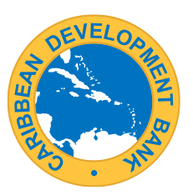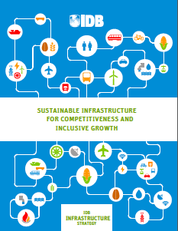

|
|
 Caribbean nations are looking to attract as much as $30 billion of investment to expand the clean power sector and cut reliance on fossil fuels, according to the Caribbean Development Bank. “Most of our countries are highly dependent on fossil fuels for power generation,” Caribbean Development Bank president Warren Smith said in an interview to Bloomberg News in London. “This vulnerability to volatile oil prices has contributed hugely to the competitiveness challenges of Caribbean industries.” About $20 billion is needed in the next five to 10 years to replace power plants and upgrade distribution and transmission, he said. There is potential to replace 4,750MW of fossil-fuel generation with renewables through 2019, Smith said. The bank is talking with regional utilities interested in building clean energy plants to feed power into the grid. Smith also noted that the region is starting from a very low level of renewables deployment and needs policy support from governments if it is to realize this clean energy vision. For example, only two countries - Jamaica and Barbados - currently allow households and businesses generating their own power through technologies such as solar panels to sell it back to the grid, leading to a policy gap that acts as a barrier to wider investment. "The regulatory environment is a prerequisite for a major uptake of renewables," Smith says. "If you want to move to a situation where you can attract investment in renewable then you have to have the ability to sell to the grid. Right now, we are behind the eight-ball on that. But we are working with the countries to try to ensure that legislation is put in place." Sources for this post: Bloomberg New Energy Finance Week in Review; Business Green.
 On March 19, 2014, the Institute participated in a roundtable hosted by the Inter-American Development Bank (IDB) on the topic of “Sustainable Infrastructure.” The IDB is the leading source of development financing for Latin America and the Caribbean. Besides loans, the IDB also provides grants and technical assistance and conducts research. In 2013, the IDB released a new infrastructure strategy [English | Español]. IDB representatives opened the event by highlighting the following key questions: How do we determine whether infrastructure projects are increasing the welfare of society? Are they are providing a decent service? Are they within the boundaries of the environment / biome? Three Pillars of Sustainability Three pillars of sustainability were discussed: Physical, Social, and Environmental. On the topic of environmental sustainability, the buzzword was “upstreaming,” which means that the IDB aims to engage governments in much earlier stages of infrastructure project planning in order to introduce sustainability concepts at the policy-making and project development stage (upstream), rather than later at the financing stage (downstream). After the opening presentation, panelists from academia and civil society organizations shared their expertise and perspectives on these issues. In particular, speakers emphasized the importance of engaging ministries of finance and planning and highlighting the economic benefits of sustainability (e.g., positive impact on GDB growth, reduction in project delays and costs). Infrastructure Sustainability Evaluation Tools Speakers from Harvard University and the US Department of Transportation and highlighted several web based tools for evaluating the sustainability of infrastructure projects.
|
Categories
All
Archives
January 2025
Blogroll
|
|
© 2013 - 2025 InterAmerican Clean Energy Institute, a project of Earth Ways Foundation Inc, a 501(c)3 nonprofit organization.
|
Web Hosting by iPage
|
 RSS Feed
RSS Feed